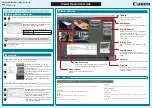
IP Unicast Commands
ExtremeWare XOS 11.5 supports only the Summit X450 family of switches and the BlackDiamond 8800 series switch.
ExtremeWare XOS 11.5 Command Reference Guide
1322
When there are multiple, conflicting choices of a route to a particular destination, the router picks the
route with the longest matching network mask. If these are still equal, the router picks the route using
the following criteria (in the order specified):
●
Directly attached network interfaces
●
ICMP redirects
●
Static routes
●
Directly attached network interfaces that are not active
If you define multiple default routes, the route that has the lowest metric is used. If there are multiple
default routes that have the same lowest metric, the system picks one of the routes with the lowest
gateway IP addresses.
You can also configure
blackhole
routes—traffic to these destinations is silently dropped.
Internet Control Message Protocol (ICMP) is used to transmit information needed to control IP traffic. It
is used mainly to provide information about routes to destination addresses. ICMP redirect messages
inform hosts about more accurate routes to other systems, whereas ICMP unreachable messages indicate
problems with a route.
Additionally, ICMP can cause TCP connection to terminate gracefully if the route becomes unavailable.
After IP unicast routing has been configured, you can configure the switch to forward Dynamic Host
Configuration Protocol (DHCP) or BOOTP requests coming from clients on subnets being serviced by
the switch and going to hosts on different subnets. This feature can be used in various applications,
including DHCP services between Windows NT servers and clients running Windows 95.
Proxy Address Resolution Protocol (ARP) was first developed so that ARP-capable devices could
respond to ARP Request packets on behalf of ARP-incapable devices. Proxy ARP can also be used to
achieve router redundancy and simplify IP client configuration. The Extreme Networks switch supports
proxy ARP for this type of network configuration.
After IP ARP has been configured, the system responds to ARP Requests on behalf of the device, as
long as the following conditions are satisfied:
●
The valid IP ARP Request is received on a router interface.
●
The target IP address matches the IP address configured in the proxy ARP table.
●
The proxy ARP table entry indicates that the system should always answer this ARP Request,
regardless of the ingress VLAN (the
always
parameter must be applied).
After all the proxy ARP conditions have been met, the switch formulates an ARP Response using the
configured MAC address in the packet.
In some networks, it is desirable to configure the IP host with a wider subnet than the actual subnet
mask of the segment. Proxy ARP can be used so that the router answers ARP Requests for devices
outside of the subnet. As a result, the host communicates as if all devices are local. In reality,
communication with devices outside of the subnet are proxied by the router.
















































